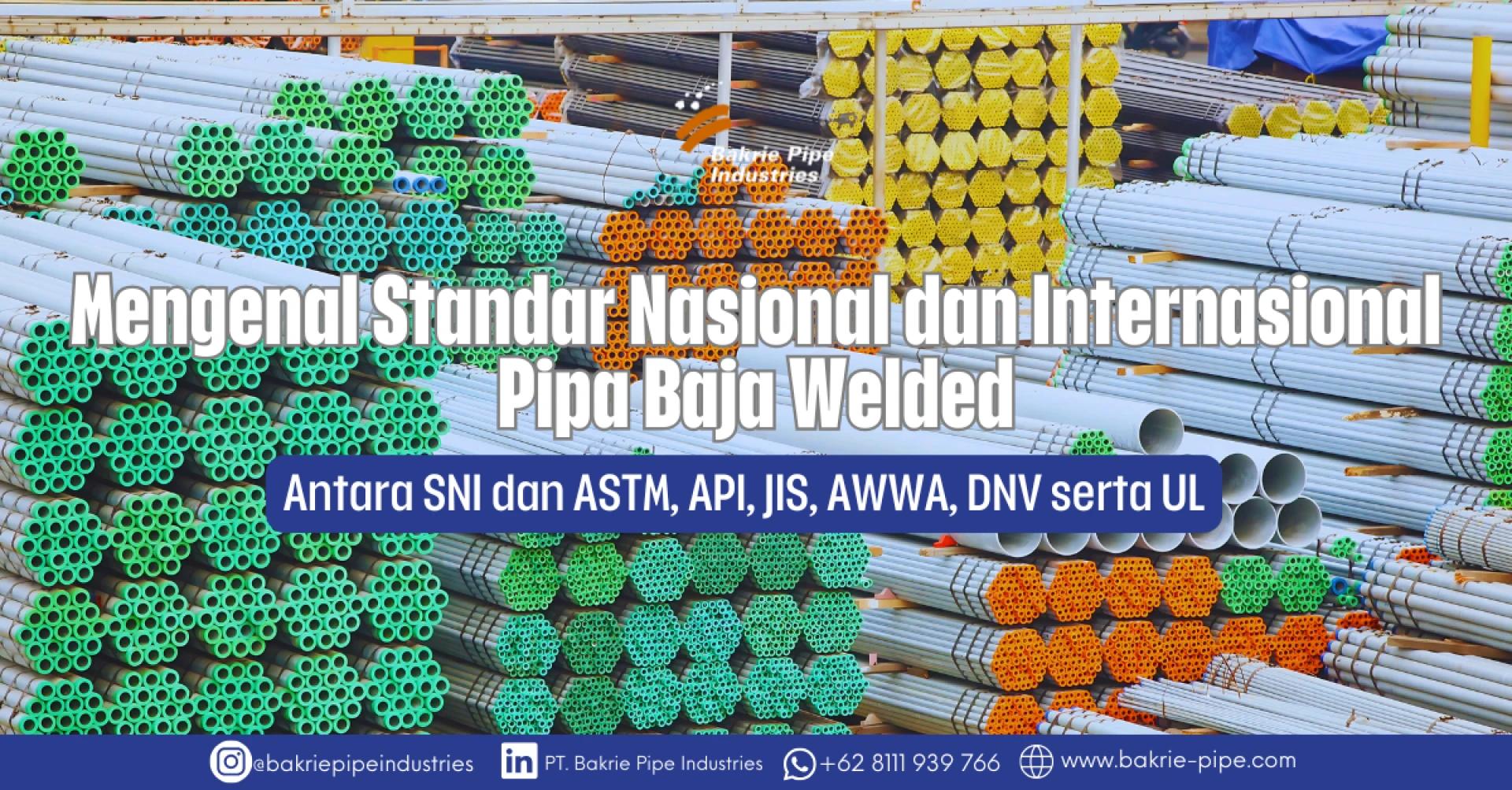Hello Pipe Enthusiasts, and welcome to the latest edition of #BPIPipeInsights!
Following our previous article How to Choose the Right Steel Pipe for Your Industrial Needs, covering production methods, diameter ranges, coating types, and technical support, this time we’ll dive into another equally critical topic: national and international standards used in the welded steel pipe industry.
In construction, oil and gas, energy, and manufacturing sectors, choosing the right technical standards plays a pivotal role in ensuring product quality, installation efficiency, and regulatory compliance. This article explores key standards such as SNI, ASTM, API, JIS, AWWA, DNV, and UL, commonly applied by manufacturers like BPI to meet diverse industrial requirements.
1. ASTM – American Society for Testing and Materials
ASTM governs the specifications of materials, testing methods, and classification of welded steel pipes:
- ASTM A53 → general purpose piping for water, steam, and light structures
- ASTM A252 → structural pipes for piling
- ASTM A795 → fire protection sprinkler systems
- ASTM A672 → high-pressure pipes made from plate steel
- ASTM A139 → arc welded pipes for fluids, gas, and steam, NPS 4 and above, including spiral and longitudinal seams
📎 Suitable for utility projects, high-pressure systems, and fluid distribution networks
2. API – American Petroleum Institute
API standards are focused on steel pipes used in the oil and gas industry:
- API 5L → line pipes for oil and gas transport
- API 5CT → casing and tubing for drilling operations
- API Spec 2B → structural steel pipes for offshore platforms
📎 Essential for energy infrastructure, offshore projects, and strategic oil and gas construction
3. JIS – Japanese Industrial Standard
Widely used across Asia for structural and civil engineering applications:
- JIS G3444 / G3452 → structural pipes and water distribution systems
- JIS A5525 → welded steel pipe piles, 318.5 mm to 2000 mm diameter, ideal for building foundations and large-scale civil projects
📎 Well suited for piling, foundation work, and civil construction
4. AWWA – American Water Works Association
AWWA sets minimum standards for steel pipe performance in potable water and wastewater systems. Recent key specifications include:
- AWWA C200-23 → Steel Water Pipe, 6 In. (150 mm) and Larger
- Covers welded and seamless pipes
- Used for drinking water, raw water, and industrial supply
- AWWA C205-24 → Cement-Mortar Protective Lining and Coating
- Covers internal and external cement-based corrosion protection systems
- AWWA C210-24 / C213-22 → Liquid Epoxy & Fusion-Bonded Epoxy Coatings
- Modern alternatives for internal and external protection
📎 AWWA standards are ideal for municipal water systems, urban infrastructure, and sanitation projects requiring long-term durability and corrosion resistance.
5. SNI – Indonesian National Standard
The SNI framework continues to evolve to support domestic industrial growth and alignment with international benchmarks. Several recent standards relevant to welded steel pipe include:
- SNI 0039:2024 → Steel pipes with or without zinc coating for water supply and gas installations, revised from SNI 0039:2013
- Designed for systems with pressure ≤ 3 bar
- Applicable to ERW and SAW pipes, spiral and longitudinal seams
- Suitable for water distribution networks and light gas installations
- SNI 0068:2017 → Steel pipes for building structures and civil works
- Used for general and lightweight structural applications
- SNI 8052:2014 → Steel pipes for piling applications
- Specifies diameter, thickness, and strength classes for building foundation use
📎 SNI increasingly provides technical specifications that are comparable to international standards such as ASTM, JIS, and ISO—supporting national competitiveness and facilitating global integration.
6. DNV – Det Norske Veritas
DNV-ST-F101 is a Norwegian standard for subsea pipelines under extreme pressure:
- Focuses on resistance to internal pressure, fatigue, and corrosion
- Designed for large-diameter and long-distance pipeline applications
📎 Ideal for offshore, subsea energy transmission, and marine gas distribution projects
7. UL – Underwriters Laboratories
UL standards ensure fire and safety compliance in steel pipe systems:
- UL 852 → steel pipes for sprinkler fire protection systems
- UL 1738 → venting systems for gas under pressure
📎 Commonly used in high-rise buildings, industrial facilities, and integrated fire protection networks
Conclusion
Understanding and selecting the right welded steel pipe standards is key to:
- Design efficiency and project execution
- National and international regulatory compliance
- System safety, durability, and performance
- Budget alignment and cost efficiency, ensuring the selected specifications are not excessively high (overspecified) compared to actual project need
Bakrie Pipe Industries provides steel pipe products that comply with all of the above standards and offers full technical support and QC documentation to meet your project’s requirements.
[Click here to contact our Marketing & Sales team via WhatsApp]
